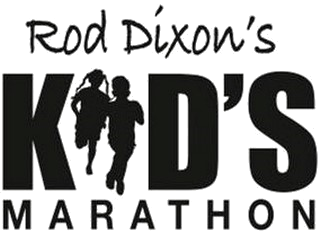Keeping up with an athlete is never an easy task in Rotorua’s Whakarewarewa Forest, but I had a cunning plan for this savvy Olympian. Burning a hole in my pocket were three tickets to jump on one of the many Southstar Shuttles circulating to the top of the hill with their load of less-fit riders.
“No way,” protests Dixon, at the thought of clambering on the bus. “Why would we take the bus when we can ride to the top?”
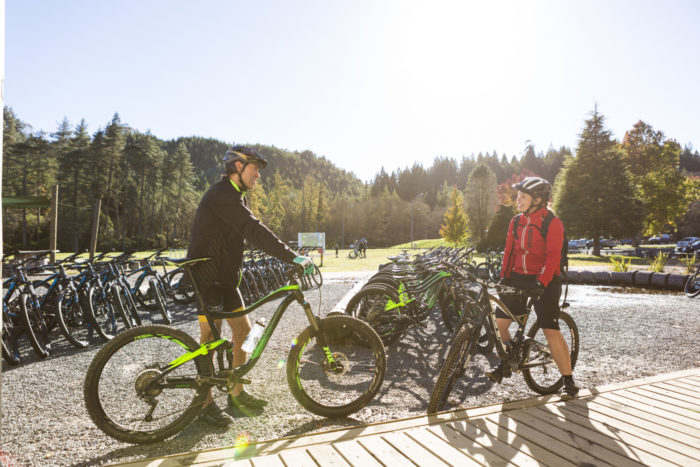
“You’re a man after my own heart,” chimes in Nadia Coombe. She’s a guide with Riding Flow, which helps people make the most of their time in the forest and find all the best trails. But not shuttles … this time anyway.
And so we begin the climb to the top of a recently rebuilt iconic trail: Split Enz. I regret not wearing a chamois short. And I refuse to wave to the riders going past on the shuttle. Even the steeper pinches can’t stop Dixon from managing conversation.
“I remember this forest,” he tells us with a grin as he grips the bars and pumps his legs with the vitality of a teenager. “I used to come with the great legend Jack Foster – a silver medallist at the 1974 Commonwealth Games and a world record time for his age – just phenomenal. We used to love running here with Jack through the forest. The energy that Jack shared with us was very defining.”
Hardly a bead of sweat on his brow. I can barely muster a response.
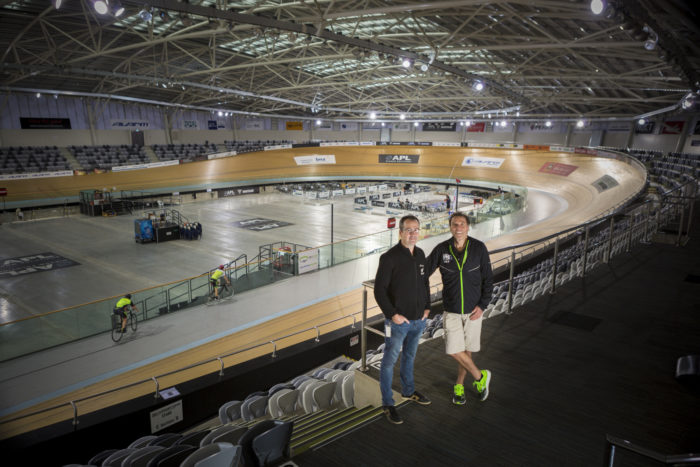
A few days earlier a torrent of sustained rain had washed out our plans to visit Te Miro Mountain Bike Park – a growing network with 27km of trails set in the native bush around Waterworks Dam between Morrinsville and Hamilton. Instead of subjecting Rod to the slithery roots of the Native Trail, we opted for a visit to the Avantidrome in Cambridge, home of Cycling New Zealand. We are met by Craig Palmer, he is the head of sports science for Cycling New Zealand and self-confessed athletics junky.
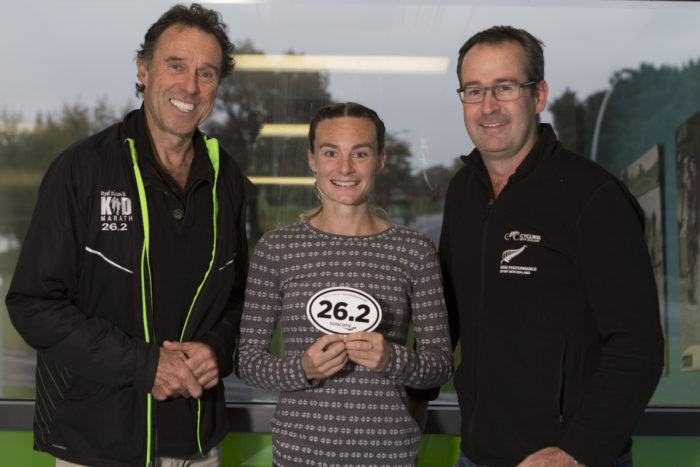
With him is middle-distance runner and two-time Commonwealth Games silver medallist Nikki Hamblin. There is some magic flying as Hamblin and Dixon discuss injuries and recovery and goal setting.
“I was very impressed by Nikki and have followed her running,” admits Dixon. “She’s learned from the mistakes she’s made and from the injuries she’s had and is becoming a stronger person because of it. I think we’re going to see some good stuff coming from her in the future.”
Palmer’s tour of the facility takes us behind locked doors, down corridors filled with excited athletes and into workshops with secret prototypes hanging on walls and spinning in jigs.
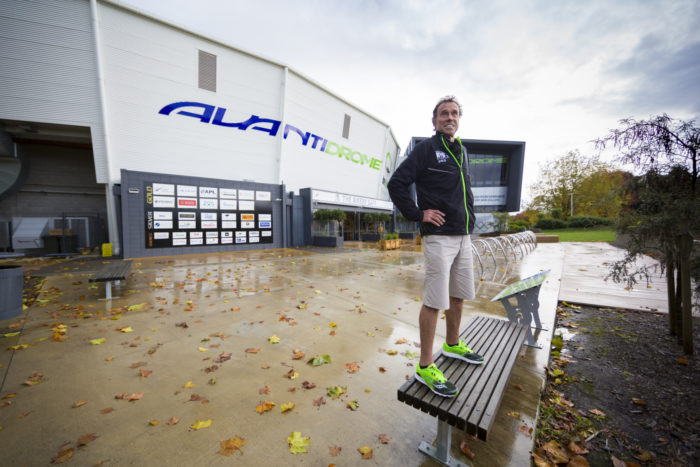
“The Avantidrome was absolutely magic – I learnt so much,” offers Dixon. “You walk into the lobby and you have all the world champions and medallists – there’s a lot of history in that place. The athletes are obviously very engaged, the technicians are very knowledgeable and it’s just a great base for great things to grow from, and to inspire young athletes to get involved.”
“I was most impressed with their advancements in technology and their awareness of world technology and that they can compete with it. That’s incredible,” he explains with a shake of his head. “We always thought that New Zealanders were disadvantaged because we weren’t big enough to compete with them. Well, we actually are big enough to compete with them.”
We emerge from one tunnel into the centre of the velodrome and are standing alongside athletes at the conclusion of a training session. Others are warming up on the boards. Dixon takes in the 360° view. It’s impressive.
Growing up, the closest he ever got to a velodrome was around Trafalgar Park in Nelson. He belonged to the Nelson Amateur Athletic, Harrier and Cycling Club.
He was in amongst a thriving pack of athletes that included Graeme Miller and Buzz Harris.
“I remember having a race with Buzz,” he laughs. “He ran a mile and I was going to ride three miles on his bike. It ended up that he couldn’t run and I couldn’t really ride a bike. So, we gave each other a high five and called it even.”
But Dixon admits that he eventually learnt the benefits of riding a bike.
“After a three-hour morning run a ride was a better way to get the body back, balanced and recovered than another three-hour run,” he smiles. “We used to think the more running we did the better, but it wasn’t.”
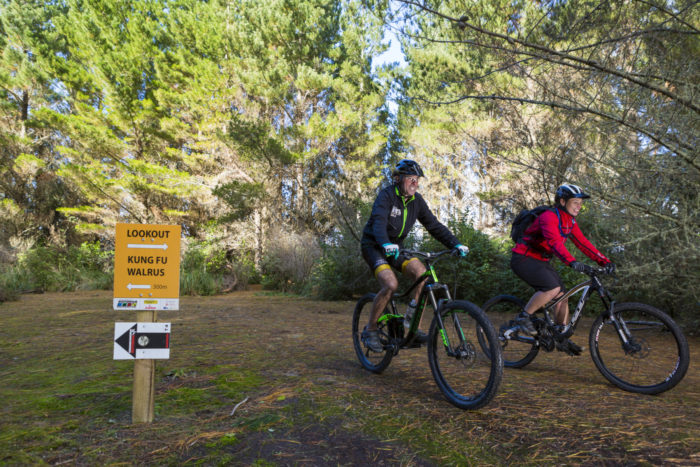
As we near the top of Split Enz we discuss the first loop we rode around: Yellow Brick Road. It’s a short flowing trail – a perfect warm-up at the base of the hill. But, for Dixon, it was more than that.
“I was riding along and all of a sudden I had this euphoric feeling,” he explains without skipping a beat in his breathing. “This wave of enthusiasm – I recognised it instantly. This is how I used to feel when I was running freely through the forest. Now I’m experiencing it as a mountain biker.” He said that feeling was connected to athleticism and physical exertion and that it was very empowering.
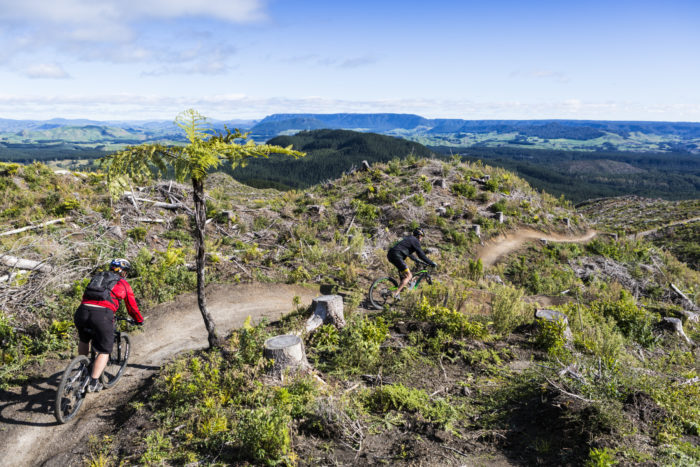
“If I can get this feeling then other people will be able to get this feeling. As people get older they become concerned that they’re not able to do some of the things that they used to do, but mountain biking is something that you can do at any age. That has been proven for me today – we have already seen six- and seven-year-olds riding with their parents and I saw some guys that had to be older than me … and that’s very old,” he laughs.
We climb to a trig on a hilltop recently stripped of trees. Groups of riders buzz and a gaggle of Taranaki girls giggle and pose for photos. Dixon is in his element and immediately strikes up conversation.
Twenty minutes later, with arms pumped and breathing heavily from the seemingly endless descent we exit the trail.
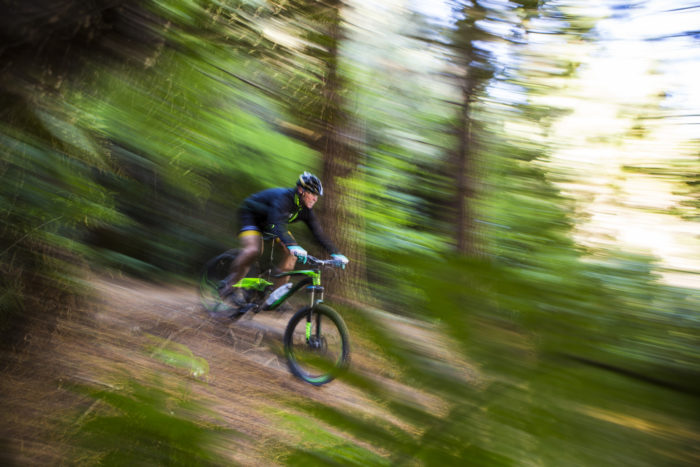
“These trails are phenomenal,” blurts Dixon rubbing some dirt away from his face with the back of his hand. “I can see why Rotorua is the lead in developing mountain bike trails and infrastructure. I visit other areas like Nelson and it’s exciting to see that they are also learning from what Rotorua is doing with the development of trails that benefit communities and change the culture of people as far as recreation and wellness goes. That really is exciting.”
“The trails themselves are just beautiful. It’s not about how fast you can go, it’s how much energy you can draw from the power of the forest and the experience. As Arnold Schwarzenegger would say, ‘I’ll be back’.”
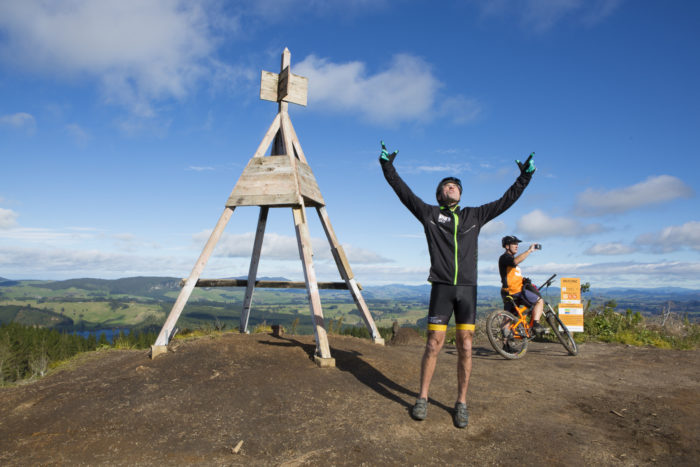
Dixon said the spectrum of people out enjoying the trails was something to behold.
“I was very encouraged to see the parking lot about a third full when we arrived and then completely full by the time we finished,” he offers. “Everyone had their own time zone – they came and went as families. We even caught up with a family away up the top who had the family dog with them – it was a real family affair. I loved that the father was pulling the youngest daughter up the hill, where it was challenging. She was seven or eight and way up in the top of the mountain – I just love that.”
He said that was the inspiration for other families.
“That’s the real slogan for this: you can do this – anybody can do this. Change your life, change your wellness and the health of your family – get out there and be active and participate in life. Rotorua has these incredible facilities that the trail builders are creating for future generations.”
Swapping his running shoes for cycling shoes has been a natural progression for Dixon, who applauds the lower impact of mountain biking.
“I do running about 35-45 minutes every other day and try to get at least three runs in every week because I know that it helps me with my muscle and bone density,” he explains. “I know that it helps my cardiovascular, but that’s about all you need to do. With mountain biking there is no stress, no impact – I can go out for four or five hours and still go out the next day for three or four hours.”
And he said reconnecting with long distance adventures into the wilderness had rejuvenated him.
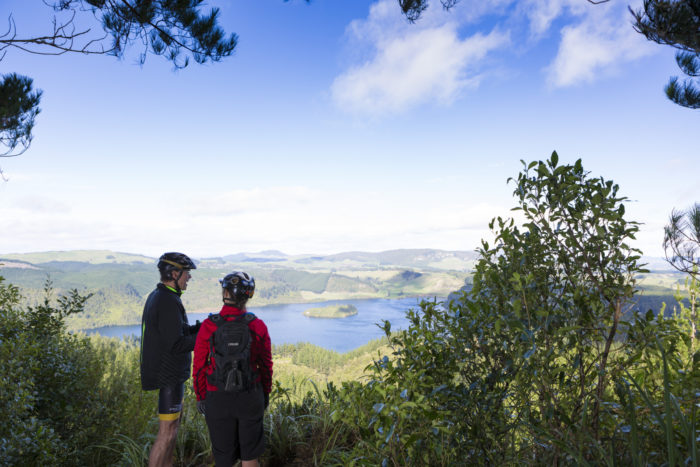
“Mountain biking allows me to go out into the wilds – way into the mountains and do some of these amazing trails that I used to run 40 years ago. That’s the exciting part for me – a couple of sandwiches and some water and away you go for the day. I certainly can’t do that as a runner anymore.”
As we hand the bikes back to the team at MTB Rotorua, Dixon tells me he is curious to learn more about the Redwoods. He breaks into a big grin with eyes lit up like lanterns as I suggest the new Redwoods Treewalk – a 553m long series of suspension bridges 12m up in the canopy.
He confesses to being a tree hugger as we make our way up the first flight of stairs. I eventually have to ask him, “seriously now, you’re either smiling or talking – those are the only two states I’ve seen you have these past few days, so tell me when you won your bronze medal in the 1500m in 1972 were you smiling or talking?”
“Well, I had never been able to do both, but that was the first time in history that I was able to,” he laughs. “That was Dixon in Wonderland.”
If that was Dixon in Wonderland then what was it in New York nine years later? Two hours after he had crossed for the win in the New York City Marathon in 1983, he returned to the finish line and was astounded by what he saw.
“Thousands of people were running across the finish line and doing exactly what I did – hands in the air, hugging each other, a couple of guys proposed to their girlfriends,” he recalls. “I watched all of this and I said to myself, ‘you know what Dixon? You’re not the only winner here today’. And that’s where I came up with my mantra for kids: Finishing is winning and winning is finishing.”
That mantra has guided his work as he travels the United States visiting schools and inspiring children and adults into action. The concrete confines of the inner city schoolyards seem a long way away as he cast his eyes around the upper canopy of the redwood forest.
“Having trails of this standard and more than 150km of them in this one forest will have a ripple effect right throughout New Zealand,” he offers. “Add in the cycle trails and the technology of electric bikes that will encourage the older generations back onto the trails and into the mountains and I can only see its popularity growing. I’m heading back to California shortly, but I know for sure I’ll be back to spend more time exploring these trails.”
There is no question Rod Dixon is New Zealand sport’s royalty, but this gentleman was far from what I expected. His story begins last century.
In the late ’50s a classroom of kids at a school in Nelson are typically restless. Some more than others. But when Edmund Hillary rolls in the door still riding the success of his, and Tenzing Norgay’s, 1953 Everest ascent, the din settles. All energy is projected to Hillary as he begins to tell the classroom that Everest is not high enough for them and that they should reach beyond its lofty heights in their own ambitions. It’s a moving speech and it’s intended to inspire, but for one young rakish kid down the back, it’s a prophetic directive.
A naturally gifted runner with an insatiable work ethic Dixon knew Hillary was talking to him. And he immediately knew what he had to do.
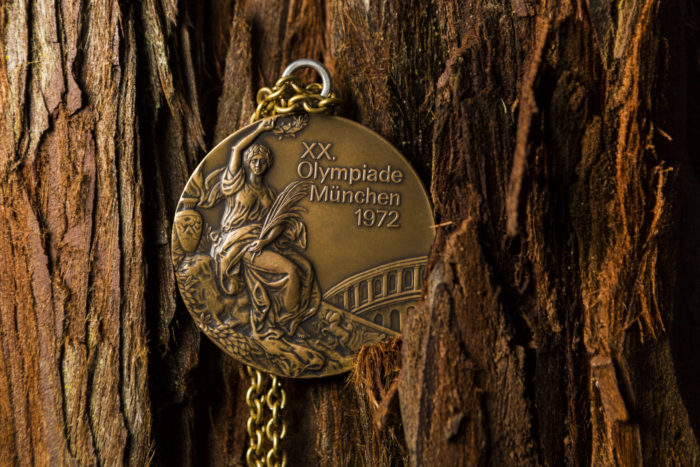
Twelve years later, in 1972 and at age 22, Dixon crossed the finishline of the Olympic Games 1500m final in third place. It was his first time representing New Zealand at the Olympics and he’d earned bronze at the Munich-hosted event.
“That was an incredibly powerful moment to finish third at the Olympic Games,” he recalls.
He credited his result as being inspired by Sir Edmund Hillary from that school visit. When asked by media if he had told Sir Hillary that, he scoffed and said, “you don’t call the Queen, you don’t call the Prime Minister and you don’t call Sir Edmund Hillary.”
“And they said, ‘well, actually, his name, address and telephone number is in the Auckland phone book’,” he laughs.
Sure enough it was and so Dixon made his way to Remuera, found the Hillarys’ house and knocked on the door. Lady Hillary answered and promptly went to get Sir Edmund.
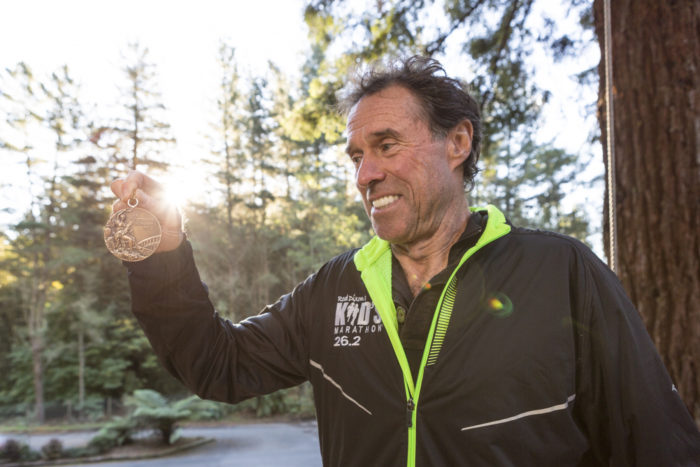
“He came to the door, looked at my medal and held it. Then he looked at me and said, ‘Well done, young man, a fine performance. Now promise me one thing. Will you inspire the next generation, like I did to you?’. I said, ‘yes, sir’ and with that he gave me my medal back and closed the door.”
Dixon didn’t really know what that meant, or what Sir Ed wanted him to do, but his mother assured him that the answer would come to him in time. Dixon continued on to win races – including the 1983 New York Marathon.
It wasn’t until 1990 that Dixon started his first in-school run club. The Leigh School, near Matheson Bay, was likely to be closed down because of a lack of funding, so Dixon started a community family fun run and called it Kid’s Marathon. It raised enough money to save the school, but it had also inspired whole families out to train and run.
“I realised this was all a part of this promise I made to Sir Edmund Hillary.”
Dixon started to work with various marathons in the United States and continued to develop his Kid’s Marathon concept in New Zealand. By 2005 he had instilled the Kid’s Marathon in the US, where the pupils didn’t have access to sports programmes and sports fields. He was getting kids active again.
“It all made sense – to get healthy, to move, eat the right foods and that running is a very natural thing,” he recalls.
Part of his school programme is to share the story of his medal, which he describes as the symbol of his journey.
Rod looks at the his medal and says: “It has never been in its box. Most of the time it is in a bag with me and it comes with me to every school I go to. I always tell them about the medal – I tell the kids about how Sir Ed held it and he asked me to inspire the next generation and that’s why I’m here. And then I tell them about the amazing and wonderful people who have touched the medal; presidents and prime ministers and the Dalai Lama, great NBA champions – all these people have held this medal. And then I tell them that, most importantly of all, more than 300,000 kids have held this medal. They put their energy in and they take some energy out and that’s why I want them to also hold it as it gets passed around the room. That medal is part of my journey.”
Dixon pauses. He takes out the medal and hands it to me. It feels well-travelled, shiny from the many hands that have polished it over the years. He has a tear in his eye. I feel privileged. Energised.
The colourful character before me carries his age well. He seems more like a mate I haven’t seen for a while than a guy I only met a few days ago. He breaks into a toothy grin and tells me another story so impossible you just know it can’t be made up.
Leaders it seems are not elected. They’re not manufactured. They’re not born into it. They just lead.
New Zealand Trails
Want to discover these trails for yourself?
Check out some of New Zealand’s top trails, including the Whakarewarewa Forest trail, and discover stunning scenery coupled with many local attractions as you explore New Zealand’s cycle trails and mountain biking tracks here.
